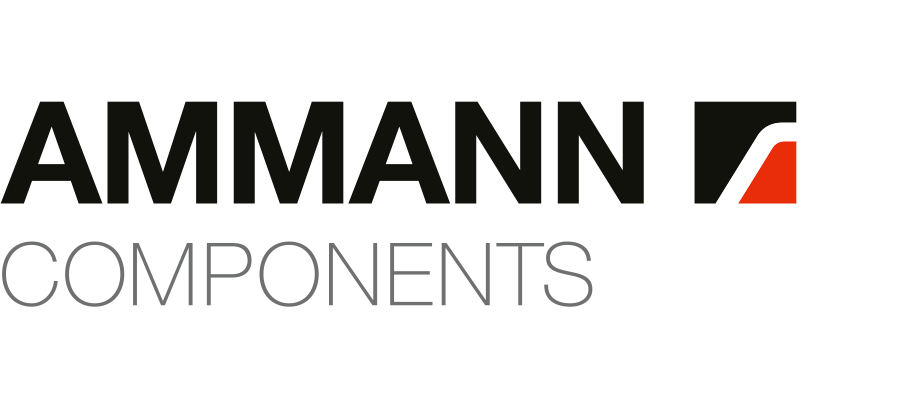As a system supplier, we deliver ready-to-install components and assemblies, including the appropriate coating. Ammann Components provides advice on selecting and defining the coating system according to technical and visual requirements. Coating is a coordinated multi-step process of pre-treatment, application, and curing; system chemistry, layer thickness, and masking are adjusted to the material and geometry. Common requirements include high corrosion protection, strong wear resistance, improved sliding or adhesive properties, and minimal particle residues for cleanroom applications. We also implement partial coatings with precisely masked areas through partner processes. We coat parts from small to large series.
Why coating? Focus on corrosion and wear protection
Coatings protect components from corrosion, abrasion, and media (e.g., moisture, chemicals, oils, salt spray), improve friction, adhesion, or appearance, and enable cleanroom suitability through reduced particle generation. The key is a process-safe combination of material, pre-treatment, and system chemistry. We view coating as part of the overall process chain and align procedures with subsequent manufacturing steps—up to final assembly delivery.
Processes at a glance: selection & application
Depending on the required protection and visual finish, we recommend the appropriate process and integrate it into the production chain, for example before CNC machining or after casting.
- Spray applications in wet coating (automated or manual): zinc flake systems, high-temperature primers, conventional wet paint
- Cathodic dip coating (KTL) for uniform layer thicknesses
- Powder coating, e.g., low-temperature for reduced part distortion
- Drum coating processes
- Physical, electrochemical, and chemical coating systems: chemical nickel, phosphating, zinc-iron, zinc-nickel, etc.
- Thermal spraying
- Anodizing, hard anodizing
This results in surfaces that precisely support the function, service life, and appearance of your components.
Zinc flake systems & thermal spraying: when things get tougher
For parts with high requirements for corrosion and wear protection, systems with inorganic layers or build-up coatings are used. Zinc flake systems provide highly durable corrosion protection without hydrogen embrittlement; thermal spraying enables functional, wear-resistant coatings on highly stressed areas.
- Raw parts from our network (e.g., casting or forging)
- Machining in CNC manufacturing
- Welding and heat treatment according to specification
- Coating according to specification (including masking)
- Assembly into ready-to-install modules (assemblies)
We deliver ready-to-install components — fully prepared for your production line.
Quality & certifications: reproducible surfaces in series
Quality begins with the selection of the system and continues through documented process steps. Testing and visual inspections ensure the required properties, while standardized procedures guarantee repeatability in serial production.
- ISO 9001 / 14001 / 45001 (combined certificate)
- EN 1090-2 EXC3 and EN 15085-2 CL1
- Traceability across the entire process chain
- Downloads:
ISO certificate,
company brochure
According to our corporate mission, Ammann Components stands for transparent processes and reliable quality.
Materials & production volumes: from small to large series
We coat components made of gray cast iron, spheroidal graphite iron, steel, and aluminum – from compact geometries to larger assemblies. Regardless of production volume (small, medium, or large series), we integrate the coating process reliably into manufacturing and adapt pre-treatments, masking, and curing conditions to each material.
Where functional surfaces must remain dimensionally stable, we use partial masking; we balance aesthetics, corrosion protection, and assembly requirements according to the specification. The coating can be aligned with subsequent CNC machining; early consultation is recommended. Contact us now and provide your documentation.
Industries & applications: practical examples in series
Whether commercial vehicles, general mechanical and plant engineering, or application-specific industries – coatings extend service life and simplify assembly and maintenance. Examples range from housings and brackets to axles, pumps, and carriers requiring specific resistance to media or temperature.
- Commercial vehicles: housings, brackets, and add-on parts with corrosion protection
- Mechanical engineering: beams, consoles, and covers
- Drives / fluids: pump, valve, and sealing surfaces with customized coatings
Further insights can be found in our reference parts and the company brochure.
Let’s talk about your coating project
Are you planning corrosion protection, wear protection, or partial masking? Contact us and upload your documents. We’ll get back to you promptly with a tailored recommendation for your coating system.
FAQ: Frequently Asked Questions about Coating
Below we answer common questions that arise during process selection and series planning.
Which processes are suitable for high corrosion protection?
Depending on part design, zinc flake systems, cathodic dip coating (KTL), or powder coating may be suitable. Selection depends on layer thickness, geometry, and further processing; we recommend the best system based on your requirements.
Powder coating vs. KTL – what’s the difference?
KTL provides uniform, penetrating base coatings even in cavities, while powder coating allows for a variety of surfaces and colors. The best choice depends on geometry, media resistance, and visual requirements – we advise on suitable combinations.
Does Ammann offer partial coatings for functional surfaces?
Yes, defined masking is possible. Functional surfaces remain free, while mounting or sealing areas are specifically protected. We take tolerances and subsequent processes into account so the surface supports part functionality and ensures smooth assembly. We coat parts in small to large series and coordinate partner processes according to your needs. Tell us your material, geometry, and annual volume – we’ll provide an assessment and integrate the process accordingly.
How is quality documented and traced?
Inspection steps and process parameters are documented. Traceability extends from the raw part to delivery. Certificates and downloads can be found here: ISO certificate and machine list.

